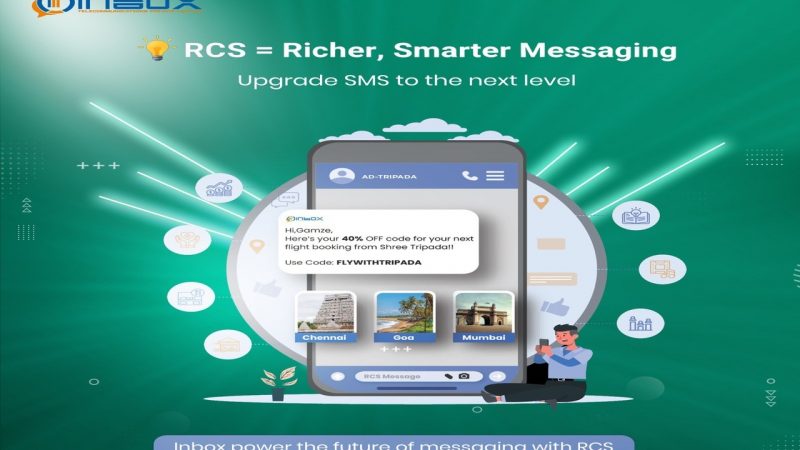5 Ways to Generate Leads for Your Business

Nowadays, it’s becoming more difficult to find people with an interest in your products. The internet provides an astounding amount of merchandise and services. Various companies and individuals are competing for attention, but users can only focus on a handful.
Fortunately, a leads-based marketing strategy can help you gather more potential customers around your brand.
First, let us elaborate on the definition of a “lead.”
A lead is a person who exhibits interest in your product or service. Meanwhile, the process of gathering them is known as lead generation. You can learn more about lead generation for growing your business.
There are two types of lead generation strategies: outbound and inbound. If you lack potential customers, you may have been using the former.
Instead, you should be using an inbound lead generation strategy. It guides consumers through the first three steps of the classic sales funnel: awareness, interest, and desire. You must make sure they like your product at each stage, so they are likely to purchase your goods.
Inbound strategies are generally much cheaper yet more effective than outbound alternatives. It allows you to understand your customers deeper and to concentrate on your target audience. There are even free online tools that will enable you to get started quickly.
Here are five ways to generate leads for your business:
Social Media
Nowadays, social media should not be treated as a mere distraction at work.
Your marketing team can harness its potential in bringing in more leads. There are roughly 7.7 million social media users around the world. With the right strategy, your business can tap into this big market.
You could start by creating your brand’s Facebook page. Make sure it highlights what your company is all about. Display relevant information about your company, and post related content on your newsfeed frequently.
Also, you could link articles from your landing page on your feed.
People who click them will then learn more about your brand. More importantly, they become more willing to accept a pitch from your sales team.
Moreover, you could pay for Facebook Ads to feature in the daily feeds of your target audience. You could spend as much or as little as you like, depending on your budget.
Social media marketing is mostly free, so it’s easily performed in lead generation.
Email Marketing
As we’ve mentioned, you could write blogs that promote the merits of your brand’s goods and services.
Companies usually place a call-to-action at the end of each online article. It asks readers to share contact information like email addresses to receive product updates in return.
These are compiled into a customer email list, and then companies send promotional articles to everyone included. These are meant to further persuade people into purchasing a brand’s merchandise or service.
Even better, your staff doesn’t have to send the emails themselves. You could automate the entire process using free online services. These can be programmed into sending emails, depending on your customers’ actions.
Email marketing is another part of lead generation that’s mostly free, yet it could help you yield more profits.
Lead Magnets
Your content may include incentives that persuade your leads further into purchasing your products.
These are called lead magnets, and they include discount codes and coupons. You may send these to first-time buyers, so there’s a good chance they’ll try your brand.
Additionally, you may give more perks to existing customers when they buy more of your brand’s offerings. Rewarding customers could convince them to continue paying for your goods and services.
Lead generation doesn’t just expand your customer base, but it also maintains brand loyalty among your clients.
Content Marketing
Inbound lead generation warms up long-term customer interest by promoting your brand’s benefits.
Companies now publish blogs that elaborate on products similar to theirs. For instance, a company that sells beauty products may post blogs about the benefits of its ingredients.
This nudges more people into the awareness stage as they learn about products similar to yours.
To guide this interest towards your brand, you could promote it as an example in your blogs. You may even put links to your company page so that those website visitors could become potential customers.
Affiliate Marketing
If you want your business to expand, you shouldn’t limit your customer base to people visiting your website.
Consequently, you should publish guest posts on third-party websites. These are the online articles we’ve mentioned, but they’re on other sites instead.
This allows your company to access that affiliate’s online traffic to expand brand awareness further. What’s more, it establishes the authority of both companies as industry experts.
Affiliate or referral marketing shows consumers that your brand is worth being recommended by other companies. As a result, they will place more trust in your company, and they’re more likely to try your products or services.
In technical terms, this tactic boosts your conversion rate by helping you turn more leads into sales.
Take note that lead generation takes a long time to prepare and execute.
Your marketing team and sales team must collaborate to craft the best marketing strategy. This can involve hours of lead scoring and planning that your company doesn’t have.
After all, you may have all hands on deck currently, so there’s no extra manpower nor time to spare.
If so, why not outsource this task to an excellent digital marketing agency like LeadAdvisors?
LeadAdvisors could handle all the aspects of your marketing strategy to remain focused on running your business.
Their experts have aided several companies in effectively marketing their brand, and yours could be next.






